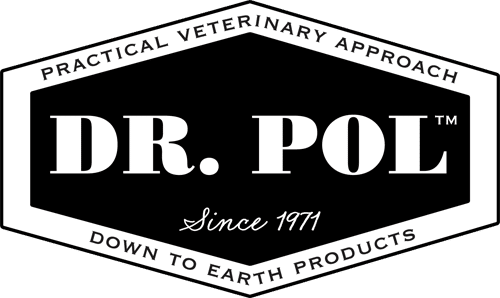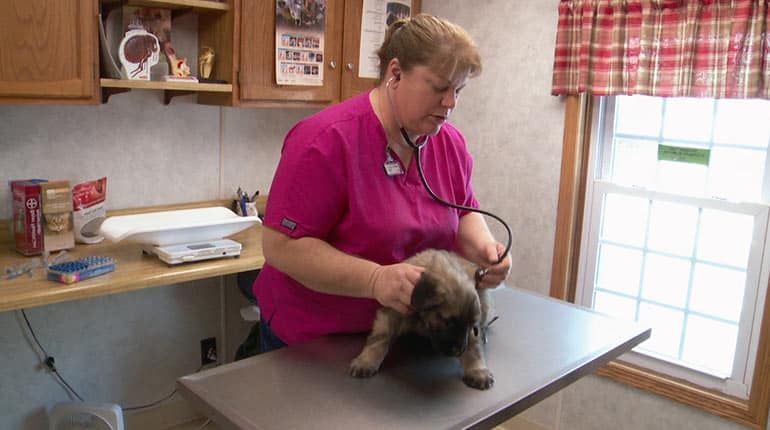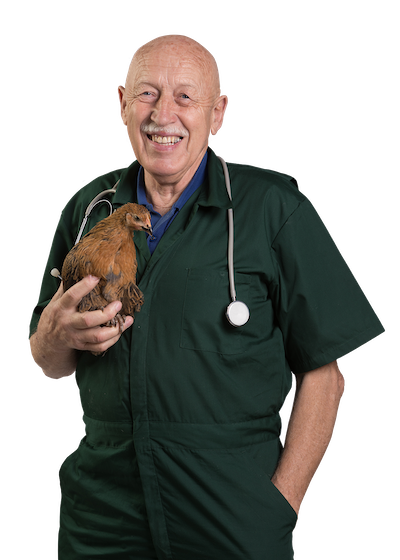Pet Health
Canine Influenza – A Year Round Concern
The cold winter months are typically peak flu season, right? Well, in humans that’s true. But when it comes to the furry members of our family the flu is a year round canine health concern. It’s vital for every dog owner to know the risks of canine influenza, the dog symptoms to watch for and what to do if you have a sick dog.
Flu Facts
- Canine flu is a fairly recent problem having been first diagnosed in 2004. It originally mutated from equine influenza and was initially detected among the greyhound population found in racing kennels. Over the past 10 years, the dog flu has spread and become more common among all dog breeds.
- Currently there has never been even one case of canine influenza being transferred from a dog to a person. However, flu viruses have been known to successfully modify themselves to infect other animals so there is always a possibility that people could be at risk.
- Canine flu is highly infectious. Dogs who are exposed to it have close to a 100% chance of getting the flu. Senior dogs and puppies are more susceptible to serious illness if infected.
- Since it is spread via airborne particles, being on the receiving end of another pooches’ sneeze or cough is enough to make your dog sick. Also, the virus has the ability to survive on surfaces for up to 48 hours so sharing a toy or food bowl with an infected friend can spread it more quickly.
- Unfortunately, dogs are the most contagious during the early days of incubation when symptoms are not always noticed. That’s how your dog’s furry pals pass it on to him before anyone knows they’re sick.
Dog Symptoms
- Mild – Mild cases of influenza will usually manifest with a wet cough and a runny nose. Also pay attention if your dog is having difficulty breathing, a loss of appetite or excessive fatigue.
- Severe – In more extreme cases, sick dogs have an elevated fever usually higher than 104 degrees Fahrenheit. Signs of dog illness will progress rapidly and can develop into pneumonia or canine respiratory disease. With more complicated cases dogs can even cough up blood.
The Dog Flu is Treatable
- Once your dog shows any flu symptoms it is imperative that you steer clear of other dogs. No dog parks. No kennels. No play dates.
- Treatment is designed to support your dogs’ immune system so she can fight the infection. Steps may include medication, plenty of fluids to prevent dehydration and lots of rest – Sound familiar? These are the steps we use when we catch that nasty bug ourselves!
- In the case of a secondary bacterial infection a broad-spectrum antibiotic may be recommended.
- A hospital visit may be necessary in those cases where influenza progresses to pneumonia. In these cases, your dog has a vastly improved chance of recovery if given intravenous fluids and antibiotics. Oxygen therapy may also be required.
- Be patient. In mild cases, your sick dog should be back to his healthy self in 2-3 weeks. With more severe cases it could take up to five weeks.
Prevention
- There is a vaccine that can reduce your dog’s chance of contracting influenza however it is not a guarantee. Usually, if exposed, a vaccinated dog can still catch the flu but the effects will be milder and for a shorter duration. If your dog is frequently exposed to other dogs you should probably ask your pet’s vet about the vaccine.
- The only way to prevent canine influenza is to avoid exposure. Certainly be careful to keep your dog away from any doggie friends that are sneezing, coughing or have a runny nose.
- Don’t let you dog play with any toys or other items used by a dog exhibiting flu-like symptoms.
- The virus can live on human hands for up to 12 hours and on clothes for up to 24 hours so be sure to wash both to avoid spreading it between animals.
- You can attempt to kill the virus in your home by using common household disinfectants such as bleach.

THE FINAL WORD FROM DR. POL
“You’re out with your dog. You see a dog with a runny nose or coughing. RUN! Ok . . . maybe just turn around and walk away, quickly. This thing spreads so fast. Protect your dog by avoiding exposure to the virus when you see it.”




